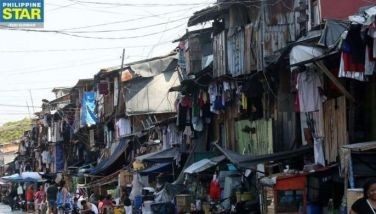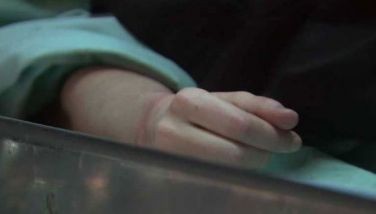As hospitals hike bed capacity: Symptomatic cases increase
CEBU, Philippines — As Cebu hospitals expand their bed capacity for COVID-19 patients, the past few weeks saw an increase in the number of symptomatic patients in Cebu City.
This was disclosed by Department of Health (DOH) - 7 Director Jaime Bernadas yesterday during an interview on Mugstoria Ta! streamed on the Facebook page of the Office of the Presidential Assistant for the Visayas (OPAV).
But Bernadas said the situation has not reached a point that would overwhelm the health care system.
“Sa ako nang gibalik-balik ug sulti, we have reasons to be alarmed, but it is not to a point nga moingon ta nga overwhelmed ang atong sistema. The past weeks, atong nakita nga adunay increases ang atong number of symptomatic cases diha sa atong surveillance data,” Bernadas said.
(As I have said repeatedly, we have reasons to be alarmed but it is not to a point that we say our system has been overwhelmed. In the past weeks, we saw an increase in the number of symptomatic cases in our surveillance data.)
Symptomatic patients are those who manifest symptoms of the disease such as fever, cough, and colds.
“Kini, ato ra ning nakita sa atong prevalence survey nga ubay ubay gayod ang mga pasyente nga adunay nakakuha or adunay exposure sa maong virus niadtong panahon nga naghimo kita sa survey,” Bernadas said.
(We saw during our prevalence survey that there are many who were infected by or exposed to the virus at the time the survey was conducted.)
Bernadas said that when the number of symptomatic cases increases, admission to hospitals also increases, which was why they have reminded hospitals, both public and private, even before to prepare for a “possible surge capacity.”
“Ang ato lang gihulat is ang response sa atong mga private hospitals and, fortunately, we have hospital operators like Dr. Yong Larrazabal who has already prepared much more of what is expected of him to prepare,” Bernadas said.
(We were just waiting for the response of the private hospitals and, fortunately, we have hospital operators like Dr. Yong Larrazabal who has already prepared much more of what is expected of him to prepare.)
Larrazabal, president and chairman of the board of the Cebu Doctors' Group, said theey have added isolation rooms and intensive care units dedicated to COVID-19 patients.
He said the aim is to increase the bed capacity for mild and moderate COVID cases to 175 from 100, and their ICU beds to 36 from 15. The Cebu Doctors' Hospital will also open a 20-bed charity COVID ward, he said.
"Our role is to calm the public by providing enough COVID beds and COVID ICUs. That's the only way," Larrazabal said.
As of Monday, Cebu Doctors' Hospital was able to open a new wing with 12 additional beds after DOH sent 10 nurses to CDH.
OPAV Assistant Secretary Anthony Gerard Gonzales explained that the 30 percent increase in the bed capacity of hospitals is a combined expansion since some hospitals would be unable to meet the 30 percent expansion target.
This means an additional 200 beds collectively in all private hospitals.
Larrazabal said private hospitals should classify cases properly and increase bed allocations for COVID patients. He pointed out, though, that the lack of nurses has contributed to the problem since last year.
In Cebu Province, Governor Gwendolyn Garcia said that the four provincial hospitals have enough beds to cater to patients of both COVID-19 and other diseases.
Each of the hospitals has segregated beds specifically for patients manifesting Influenza-Like Illnesses (ILI).
At the Cebu Provincial Hospital in Balamban, 45 of its 100 capacity rate has been occupied. Of the 23 beds allocated for COVID-19 patients, 15 are occupied.
At the hospital in Bogo City, 63 beds out of its 100 bed capacity are occupied. Four out of 10 beds allocated for COVID-19 patients are occupied.
In Carcar City, 27 out of 100 available beds are occupied. Three of six beds for COVID-19 patients are being used.
In Danao City, 85 beds of 100 beds are in use. Five out of 20 beds allocated for COVID-19 patients are occupied.
"What do I wish to emphasize here? Nga sa atong hospitals, whether this be provincial hospitals or district hospitals, we have enough beds that have been allocated for possible COVID," Garcia said.
Work Continues
Cebu City Mayor Edgardo Labella said the number of positive patients found did not surprise him as these are results of the massive testing and contact tracing the city is undertaking.
Up to 90 percent of the patients in the city are reportedly asymptomatic.
The city also has quarantine facilities available – from barangay isolation centers to more sophisticated quarantine centers such as the Cebu City Quarantine Center and the two Bayanihan Centers.
The city will also have another facility to house asymptomatic patients, the NOAH Complex at the South Road Properties.
Labella said that even with the negative comments and reviews from some sectors, the city will continue with its massive testing.
“We will continue with our massive testing and contract tracing. We will never stop that because the only way to fight this virus, this invisible enemy, is through contact tracing and massive testing. We have the resources and we are capable of that,” Labella said.
Segmental lockdowns for sitios or households will continue in areas that register COVID-19 cases.
Labella said the city will have two ambulances with negative pressure equipment and will implement a system wherein mild to moderate patients do not have to go to the hospitals.
Mask
In the same online program of OPAV, Labella said Cebu City will be stricter in enforcing the wearing of mask policy in public places, even after the Commission on Human Rights (CHR) called the city’s attention on the temporary shelter for violators.
“Violators undergo lecture for eight hours, exercise, and do some Sinulog dances in order to discipline these people. Even with the GCQ, we should never be complacent. This virus is unforgiving, this virus is very treacherous, but if only our people will observe simple rules like wearing of masks and observe social physical distancing, I think the possibility of getting this virus is remote,” Labella said.
Dr. Von Philip Baton, medical coordinator of DOH, agrees with Labella on the strict enforcement of wearing of masks, as well as observance of social distance and proper hygiene.
“The hospitals are the last line of defense. The first defense is stay at home if you don’t need to go out; mao niy pinaka-important labi na sa atong mga vulnerables, ang atong mga tigulang, ang atong mga batan-on and mga bata, ang mga naay mga pre-existing medical condition labi na high blood ug diabetis,” Baton said.
(The hospitals are the last line of defense. The first defense is stay at home if you don’t need to go out. That is what is most important especially to the vulnerable individuals like our senior citizens, our children, and those with pre-existing medical conditions like high blood and diabetes.)
OPAV is also set to put up a Command Center to get real time information and provide proactive measures to help LGUs further. JMO (FREEMAN)
- Latest


























